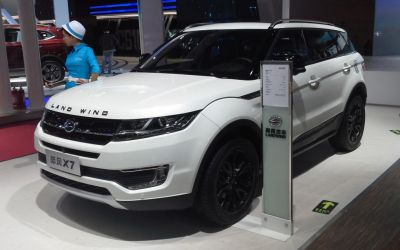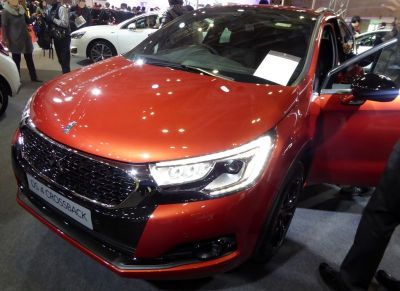 2024 Hyundai Kona II Dimensions, Size & Specs
2024 Hyundai Kona II Dimensions, Size & SpecsMeasurements of the 2024 Hyundai Kona II, engineered for optimal performance and comfort
| Dimensions | |
|---|---|
| Length: | 4350-4384 mm171.3-172.6 in14.3-14.4 ft |
| Width: | 1826 mm71.9 in6.0 ft |
| Height: | 1575-1610 mm62.0-63.4 in5.2-5.3 ft |
| Ground Clearance: | 151-206 mm5.9-8.1 in0.5-0.7 ft |
| Trunk Capacity: | 466-722 liter16.5-25.5 cu ft |
| Trunk Capacity (Max): | 1300-1804 liter45.9-63.7 cu ft |
| Weight Specifications | |
| Curb Weight: | 1295-1773 kg2855-3909 lbs |
| Maximal permitted Weight: | 1855-2220 kg4090-4894 lbs |
| Roof Load: | 100 kg220 lbs |
| Tire Specifications | |
| Rims Sizes: | 17-inch rims:
|
| Tire Sizes: |
|
The Hyundai Kona II, introduced in 2023 as the 2024 model year, represents the second generation of Hyundai's compact SUV offering, blending modern design with versatile dimensions optimized for urban and suburban driving. The 2024 Kona II spans a length of 4350 to 4384 mm (171.3 to 172.6 inches), making it agile yet spacious enough for daily use. Its width ranges narrowly from 1825 to 1826 mm (71.9 to 71.9 inches), while the height varies between 1575 and 1610 mm (62.0 and 63.4 inches), providing a balanced silhouette that maximizes interior headroom without compromising aerodynamic efficiency.
Weight considerations reflect the diversity in trim and configuration options, with a curb weight starting from a lightweight 1295 kg (2857 lbs) and increasing up to 1773 kg (3908 lbs). The maximum permissible weight spans from 1855 to 2220 kg (4090 to 4894 lbs), allowing for flexible passenger and cargo loads. The ride height or ground clearance is adjustable between 160 and 206 mm (6.3 to 8.1 inches), catering to different road conditions and driving preferences.
Luggage capacity is a standout feature in the Kona II. With rear seats upright, the cargo space ranges from 466 to 722 liters (16.4 to 25.5 cubic feet), suitable for everyday shopping, luggage, or sporting equipment. When the rear seats are folded down, this capacity substantially expands to a generous 1300 to 1804 liters (45.9 to 63.7 cubic feet), offering ample room for larger loads or outdoor adventures.
The Kona II supports a roof load of up to 100 kg (220 lbs), facilitating additional cargo options such as roof boxes or bike racks. The SUV rides on a variety of rim sizes including 16-, 17-, 18-, and 19-inch configurations (6.5J x 16 up to 8J x 19), paired with tire sizes like 215/60 R17, 215/55 R18, 235/50 R18, 235/45 R19, and 205/65 R16, which together provide optimum performance and road holding for diverse driving conditions.
Overall, the Hyundai Kona II 2024 model continues the brand’s commitment to blending practicality, comfort, and style in the competitive compact SUV segment, making it an attractive option for drivers seeking a versatile vehicle with well-rounded dimensions and functional space.
Discover the standout features that make the 2024 Hyundai Kona II a leader in its class
Have a question? Please check our knowledgebase first.
The Hyundai Kona II (2024) features a modern compact SUV size with lengths ranging between 4350 mm and 4384 mm (171.3 to 172.6 inches). Its width is very consistent at about 1825 to 1826 mm (71.9 to 71.9 inches), providing a stable road presence. Height varies between 1575 mm to 1610 mm (62.0 to 63.4 inches), depending on specific trims and configurations. These dimensions strike a good balance, making the Kona II maneuverable in urban settings while offering a confident stance typical of SUVs.
The curb weight of the Hyundai Kona II (2024) ranges from 1295 kg to 1773 kg (2857 to 3909 lbs), depending on the drivetrain, trims, and optional equipment included. The maximum weight capacity, which factors in passengers and cargo, is between 1855 kg and 2220 kg (4090 to 4896 lbs). This weight range reflects the variety in powertrain options such as petrol, hybrid, and electric versions, allowing this SUV to cater well to different performance and utility needs.
The Hyundai Kona II offers flexible cargo space tailored for versatile lifestyles. With the rear seats in their normal upright position, luggage capacity ranges from 466 liters to 722 liters (16.5 to 25.5 cubic feet). Folding down the rear seats dramatically increases the cargo volume to between 1300 liters and 1804 liters (45.9 to 63.7 cubic feet), which is ample for larger items, weekend trips, or recreational gear. This level of cargo flexibility ranks well among compact SUVs.
The Hyundai Kona II provides a practical ride height and ground clearance ideal for urban and light off-road use. Its ground clearance ranges from 160 mm to 206 mm (6.3 to 8.1 inches), depending on the particular model and suspension setup. This ride height combined with SUV styling helps with visibility, ease of entry/exit, and handling on varied surfaces, making it suitable for drivers seeking something rugged yet city-friendly.
The Hyundai Kona II supports a variety of rim and tire sizes to better suit different performance and stylistic preferences. Rims sizes include 16, 17, 18, and 19 inches in various widths such as 6.5J, 7.0J, 7.5J, and 8J. Corresponding tire sizes offered are 205/65 R16, 215/60 R17, 215/55 R18, 235/50 R18, and 235/45 R19. This range provides a balance between ride comfort, handling performance, and visual appeal.
Yes, the Hyundai Kona II (2024) typically fits well into standard residential garages, which generally accommodate vehicles up to around 2.4 meters (7.9 feet) in width and about 2.0 meters (6.6 feet) in height. With the Kona II's width of approximately 1825-1826 mm (71.9 inches) and height between 1575-1610 mm (62.0-63.4 inches), it should comfortably park in most standard single-car garages without any issues, leaving extra space for opening doors and maneuvering.
Compared to the first generation Kona, the Hyundai Kona II (2024) presents a slightly longer and wider footprint, enhancing interior space and cargo capacity. The length ranges from 4350 mm to 4384 mm compared to about 4165 mm previously, offering more legroom and improved comfort for passengers. The width has grown slightly, maintaining a stable stance and better shoulder room. Additionally, the luggage capacity and ground clearance have improved, refining usability for daily urban driving and light adventurous trips, while maintaining the Kona's characteristic nimble driving experience. These dimensional upgrades make the second generation more practical and appealing.
In the competitive compact SUV segment, the Hyundai Kona II holds its own with a length range of roughly 4.35 to 4.38 meters, which is on par with rivals like the Honda HR-V, Toyota C-HR, and Mazda CX-30. Its width and height also align closely with these models, offering ample passenger space without sacrificing maneuverability. The Kona II distinguishes itself with its generous luggage capacity especially when seats are folded (up to 1804 liters), impressive ground clearance options, and a modern design aesthetic. Moreover, Hyundai's technology and safety features can outmatch or equal most competitors, making the Kona II a well-rounded choice.
The Hyundai Kona II (2024) has a roof load capacity of 100 kg (220 lbs). This capability is sufficient for mounting roof boxes, bike racks, or ski carriers, enhancing the vehicle's practicality for outdoor enthusiasts or families needing extra luggage space. The 100 kg limit ensures safety and stability while driving, although users should always consider the weight distribution and secure attachment of roof carriers to maintain optimal vehicle dynamics and avoid excess strain on the roof structure.
The Hyundai Kona II's curb weight ranges from about 1295 kg to 1773 kg (2857 to 3909 lbs). This variation is influenced by factors such as powertrain type—lighter internal combustion engine models weigh less than electric or hybrid variants due to battery weight. Trim levels and added features like all-wheel drive also impact overall weight. Optional equipment, including larger wheels or additional safety and convenience technologies, can incrementally increase weight. This weight range affects fuel economy, performance, and handling, allowing buyers to select a version best suited for their driving needs.
Discover similar sized cars.

| Production: | 2013-2016 |
|---|---|
| Model Year: | 2013 |
| Length: | 4365 mm171.9 in |
| Width: | 2113 mm83.2 in |
| Height: | 1604-1639 mm63.1-64.5 in |

| Production: | 2023-present |
|---|---|
| Model Year: | 2023 |
| Length: | 4304 mm169.4 in |
| Width: | 1987 mm78.2 in |
| Height: | 1550 mm61.0 in |

| Production: | 2015-present |
|---|---|
| Model Year: | 2015 |
| Length: | 4420 mm174.0 in |
| Width: | 1910 mm75.2 in |
| Height: | 1630 mm64.2 in |

| Production: | 2016-2020 |
|---|---|
| Model Year: | 2016 |
| Length: | 4363 mm171.8 in |
| Width: | 2078 mm81.8 in |
| Height: | 1601-1625 mm63.0-64.0 in |

| Production: | 2020-2023 |
|---|---|
| Model Year: | 2021 |
| Length: | 4297 mm169.2 in |
| Width: | 2001 mm78.8 in |
| Height: | 1559 mm61.4 in |

| Production: | 2017-2020 |
|---|---|
| Model Year: | 2017 |
| Length: | 4299 mm169.3 in |
| Width: | 2005 mm78.9 in |
| Height: | 1559 mm61.4 in |

| Production: | 2015-2018 |
|---|---|
| Model Year: | 2015 |
| Length: | 4284 mm168.7 in |
| Width: | 2052 mm80.8 in |
| Height: | 1529 mm60.2 in |
